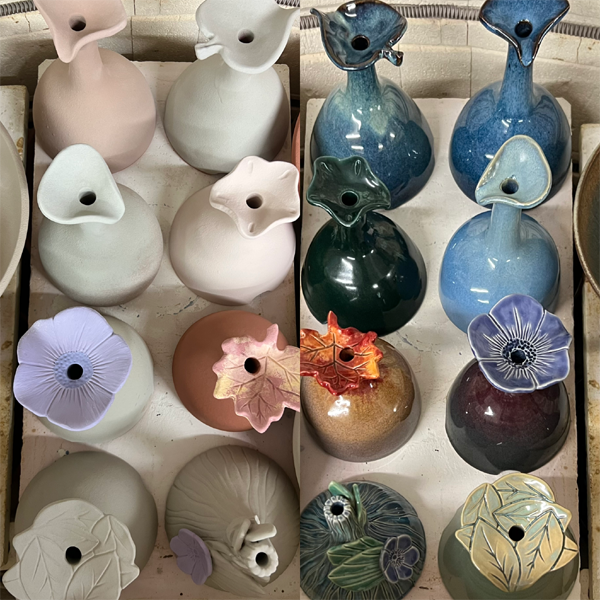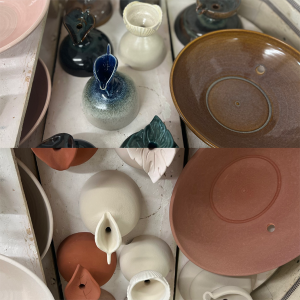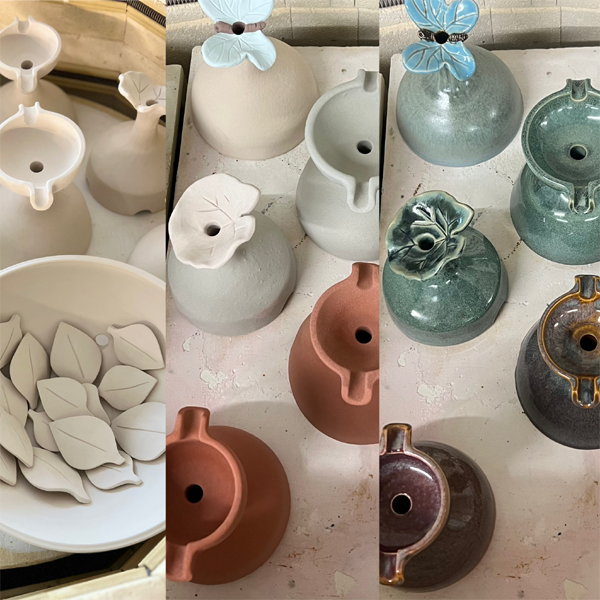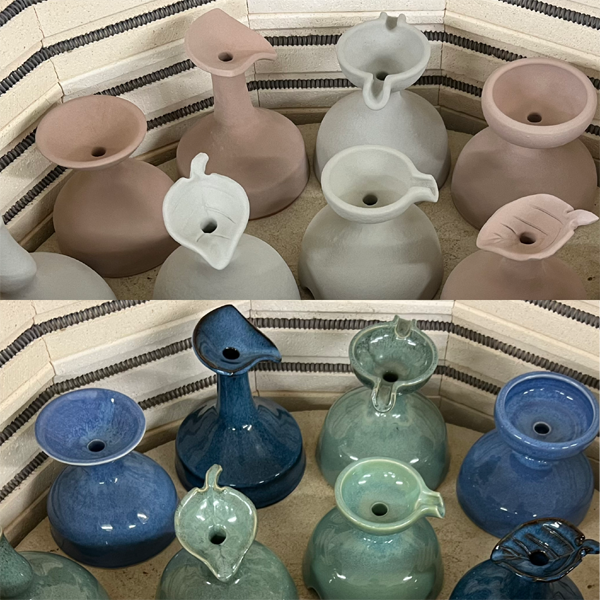The Glazing
Twice a week we at ThirstyCats load the glaze kiln with bisqued-ware to which we’ve just applied glazes. A day later we open the kiln and behold the transformation that 2200° F over a period of about 12 hours makes.
The top and bottom images to the right are mirror images of one another. The bottom section is before firing, the top after.


The image to the left shows unfired glazed pieces on the left, after firing on the right.
Truth be told, we never know for sure how any piece is going to come out of the glaze kiln, in part because of the constantly in flux dynamics of ceramics and all the variables that can affect it, and in part because we are forever experimenting with underglazes, glazes and glaze combinations.
So its always a bit of a thrill for us to open the kiln whereupon we are often met with delightful surprises and sometimes with disapointments.
The Maple leaf, second row from the bottom of the image on the left, was sponged with several underglazes. How would it come out? Well, nicely, as it happened. On the otherhand, the underglaze that was used as a rub in the veins and outline of the leaves, bottom right, was disapointingly light. Not enough coats of underglaze.


The image above left shows bisqued ware at the far left, bisqued ware with unfired glaze, center, and the same pieces after firing on the right. The right image shows mirror images top and bottom of before and after firing the kiln.
